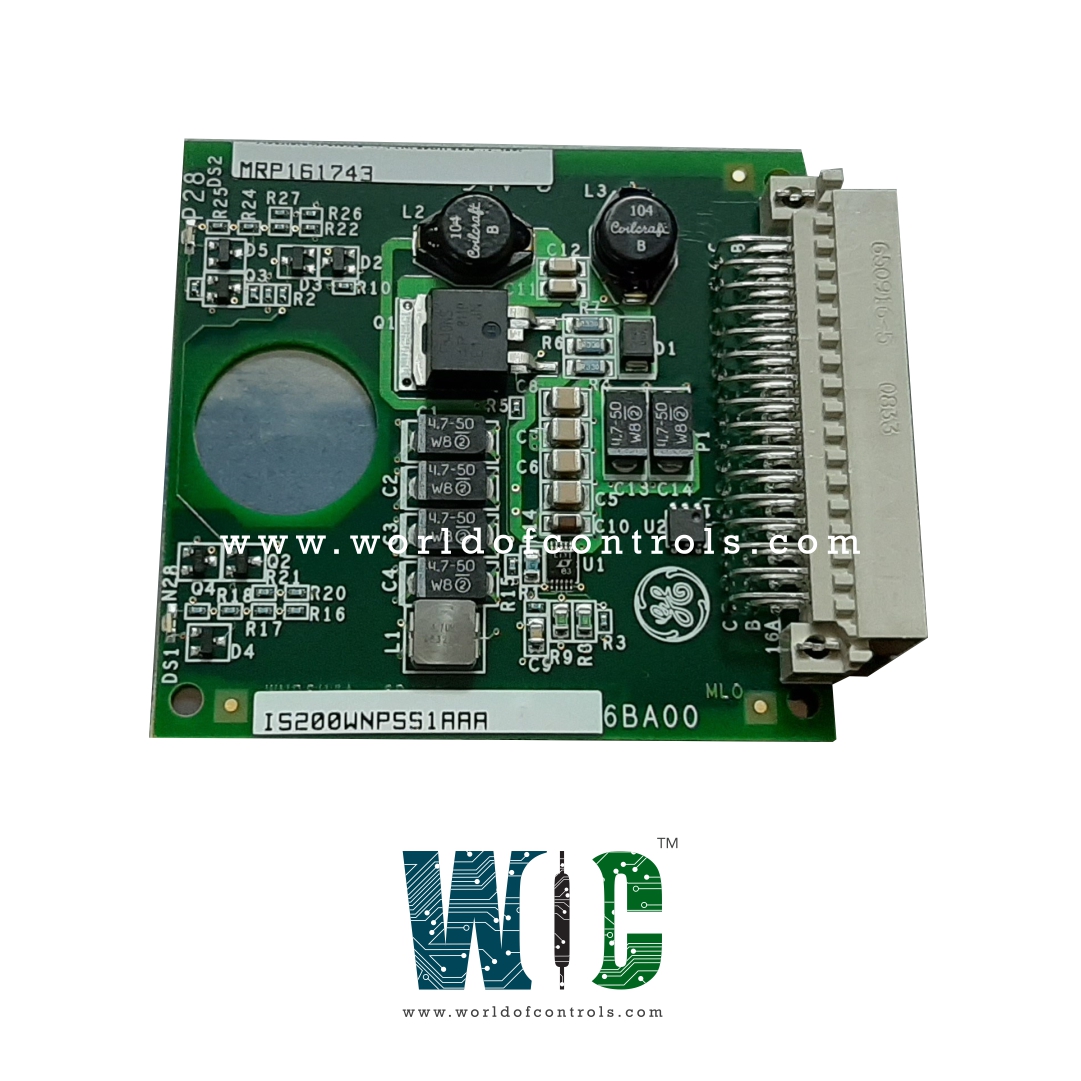
World Of Controls understands the criticality of your requirement and works towards reducing the lead time as much as possible.
IS200WNPSS1A - Power Supply Daughterboard is available in stock which ships the same day.
IS200WNPSS1A - Power Supply Daughterboard comes in UNUSED as well as REBUILT condition.
To avail our best deals for IS200WNPSS1A - Power Supply Daughterboard, contact us and we will get back to you within 24 hours.
Part No.: IS200WNPSS1A
Manufacturer: General Electric
Country of Manufacture: United States of America (USA)
Frequency: 50/60 Hz
Product Type: Power Supply Daughterboard
Availability: In Stock
Series: Mark VIe
IS200WNPSS1A is a power supply daughterboard developed by GE. It is part of the Mark VIe series. The component is a power supply daughter board under Vibration
Monitoring System. The WNPS utilizes the 28V bus from the corresponding channel (R, S, or T) to generate the necessary power for both the vibration probes and any onboard chips that require power. Additionally, each -28V supply is equipped with a monitor feed, which should be looped back to the I/O pack for monitoring purposes.
The WOC team is always available to help you with your Mark VIe requirements. For more information, please contact WOC.
What is IS200WNPSS1A?
It is a power supply daughterboard developed by GE under the Mark VIe series.
What role do the daughterboards play in the system?
The daughterboards are integral to the TVBA's functionality as they are responsible for converting the incoming +28V power to -28V, a crucial requirement for the operation of the system.
How is maintenance managed without disrupting system functionality?
Maintenance procedures are designed to ensure minimal disruption to system operations. By disconnecting the I/O pack power and removing the WNPS, maintenance activities can be carried out seamlessly, allowing for continuous system operation.
How important is the mounting of daughterboards within the TVBA?
Mounting the daughterboards securely is essential to meeting stringent vibration and seismic standards. This ensures system stability and reliability, preventing issues related to vibration or seismic activity that could compromise performance.
How does the WNPS distribute power and monitor system health?
The WNPS utilizes the 28V bus from the corresponding channel to supply power to vibration probes and onboard chips. Additionally, monitor feeds for each -28V supply are routed back to the I/O pack for continuous monitoring, enabling timely detection of potential issues or anomalies.
How does the TVBA handle current distribution, and what is its capability?
Through a sophisticated mechanism of diode-based current sharing, the TVBA combines the three -28V sources to create the TVBA N28 bus. This configuration enables the TVBA to supply sufficient current to various components, ensuring reliable performance under normal operating conditions. However, it's crucial to note that a TVBA equipped with a single WNPS may not be able to handle certain conditions, highlighting the importance of redundancy for system reliability and functionality.